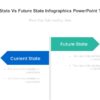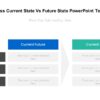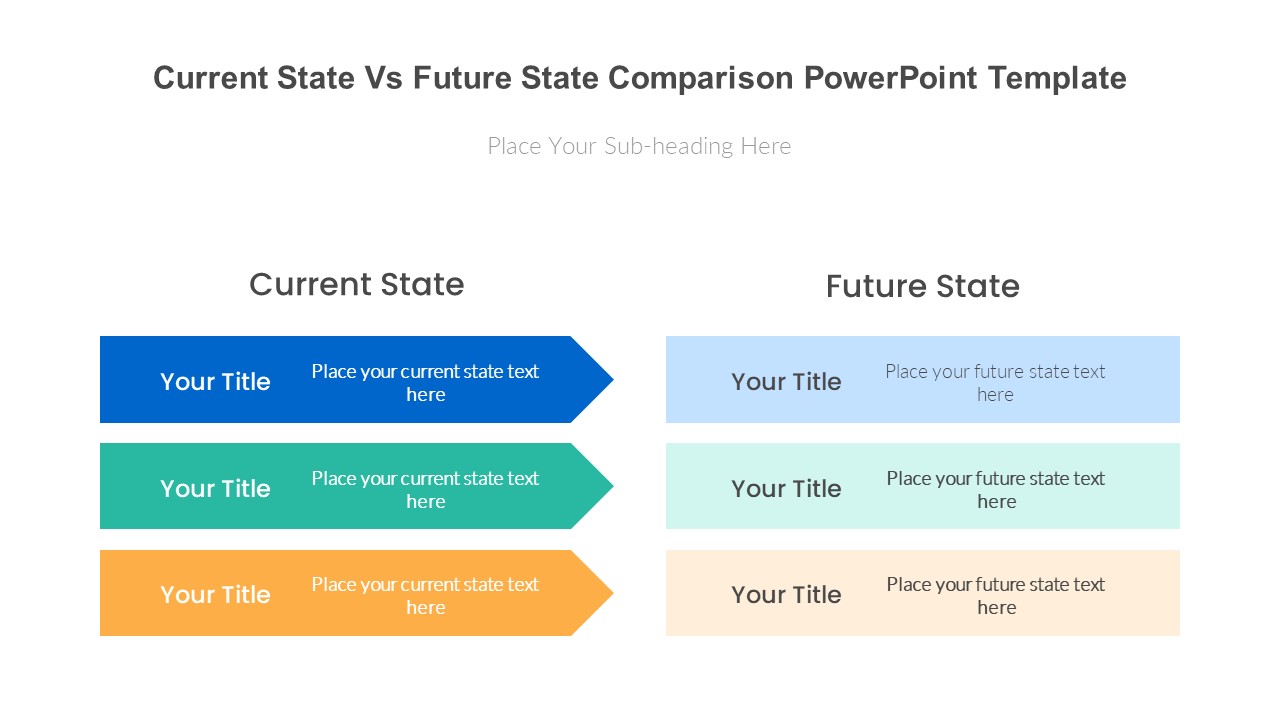Navigate the path of transformation seamlessly with our Current State vs. Future State Comparison PowerPoint Template. This professionally designed template is a powerful visual aid for depicting the evolution of your business or project. Clearly illustrate the existing state, future vision, and the strategic steps required to bridge the gap.
The template’s user-friendly interface and customizable elements make it a valuable resource for business leaders, consultants, and educators. Capture your audience’s attention with compelling graphics, charts, and diagrams that enhance the clarity of your message. Whether you’re presenting a strategic plan, organizational change, or performance analysis, this template is tailored to meet your needs.
Streamline communication and foster a shared understanding of your journey from the present to the envisioned future. Elevate your presentations and captivate your audience with the Current State vs. Future State Comparison PowerPoint Template.
- Completely editable in terms of shape, color, size and text
- This template has a built in color theme which is unaffected by copy-pasting
- Includes an icon family with 135 unique completely editable icons
- Drag and drop image placeholder
- Completely editable (using spreadsheet) data-driven charts for displaying statistics
- Completely editable vector graphics
Supports:
Microsoft PowerPoint 2010, 2011, 2013, 2016
MacOffice 2016, MacOffice 365, Keynote, Google Slides
Use Cases For Current State Vs Future State Comparison PowerPoint Template:
- Business Strategy Planning: Compare the current state of the business with the desired future state to identify gaps and formulate strategic initiatives for growth and improvement. Visualize key metrics, processes, and outcomes to drive decision-making and alignment across stakeholders.
- Process Improvement Initiatives: Analyze current processes and workflows alongside envisioned future processes to identify areas for optimization and efficiency gains. Present quantitative and qualitative data to support the rationale for change and guide implementation efforts effectively.
- Organizational Transformation: Illustrate the current organizational structure, culture, and capabilities alongside the envisioned future state to facilitate transformational change. Highlight desired shifts in roles, responsibilities, and behaviors to align teams and drive progress towards strategic objectives.
- Project Management: Evaluate the current project status and compare it with the projected future outcomes to assess project performance and identify corrective actions. Showcase key milestones, deliverables, and risks to stakeholders, enabling informed decision-making and proactive management.
- Product Development Roadmaps: Compare the current features, functionalities, and user experiences of a product with the envisioned future enhancements and innovations. Present a roadmap of planned product iterations, upgrades, and releases to stakeholders, ensuring alignment with market demands and business goals.
- Change Management Strategies: Contrast the current organizational landscape with the desired future state to develop change management strategies that effectively address resistance and drive adoption. Communicate the benefits of change and mitigate concerns by illustrating the positive impact on individuals and the organization as a whole.
- Market Analysis and Forecasting: Analyze the current market position and competitive landscape in comparison to future market trends and opportunities. Present market research findings, competitor analysis, and growth projections to inform strategic decision-making and resource allocation.
- Technology Adoption Planning: Evaluate the current technology infrastructure, systems, and capabilities against future technological advancements and digital transformation goals. Illustrate the benefits of adopting new technologies, addressing potential challenges, and mitigating risks to support informed technology investment decisions.
- Training and Development Programs: Assess the current skills, competencies, and knowledge levels of employees against future skill requirements and learning objectives. Design training and development programs that bridge the gap between the current state and future expectations, fostering employee growth and organizational success.
- Financial Performance Analysis: Compare current financial metrics, such as revenue, expenses, and profitability, with future financial projections and targets. Present a comprehensive analysis of financial trends, risks, and opportunities to stakeholders, guiding financial planning and investment strategies.





Christine –
Very helpful